The Definitive Guide to Behavioral Segmentation
Published on April 17, 2025/Last edited on November 11, 2025/18 min read
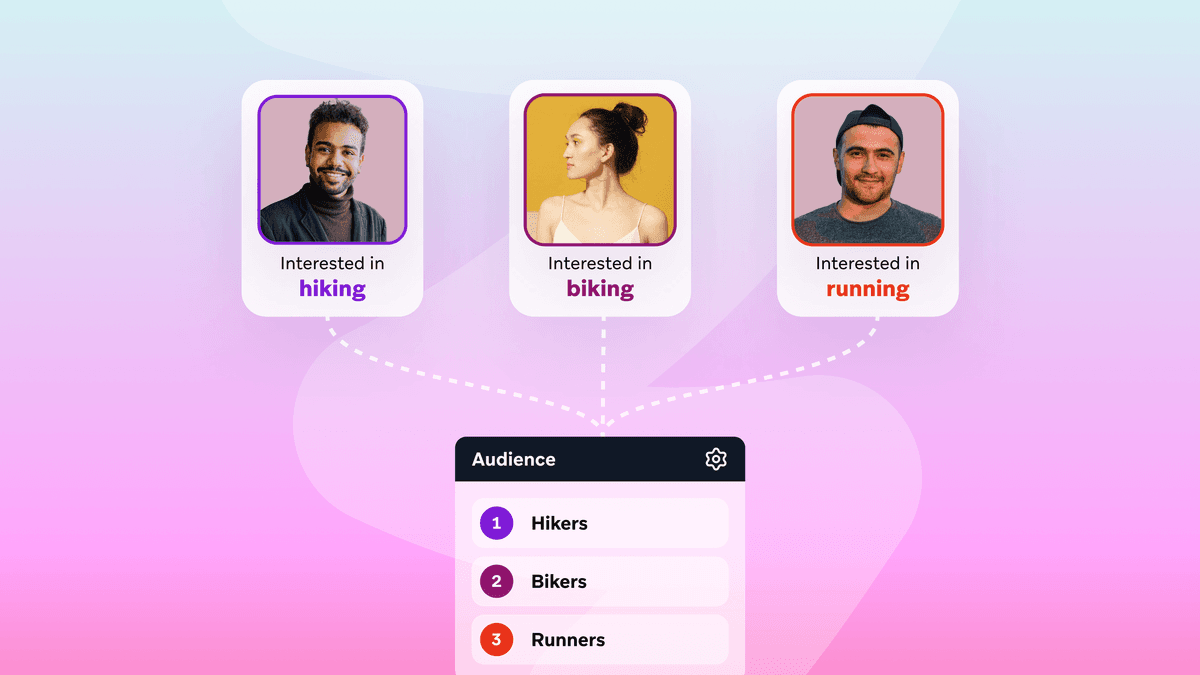
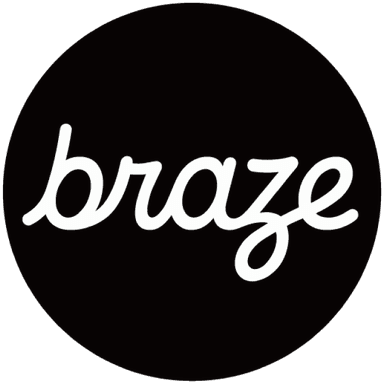
Team Braze
Behavioral segmentation is an important strategy that brands can use to enhance marketing personalization, customer engagement, and customer experiences, and drive business outcomes like sales, customer satisfaction, customer lifetime value, and retention.
Investing in segmentation is more important than ever because most customers have come to want and even expect personalized experiences. According to McKinsey & Company’s Next in Personalization Report, nearly three-quarters (71%) of U.S. consumers expect brands to personalize their experiences, and even more (76%) get frustrated when businesses fail to meet their expectations. Per this study, the majority of consumers want: Relevant product and service recommendations; tailored messaging; targeted promotions; to be celebrated for the engagement milestones they achieve; to receive timely communication after taking important actions; and to get follow-up updates after completing a purchase or demonstrating other behavior patterns.
In this guide, we’ll explore what segmentation is, the main types of segmentation, what behavioral segmentation is, the importance of segmentation, and more.
Key topics we’ll cover:
- What is behavioral segmentation?
- Behavioral segmentation definition
- The different types of behavioral segmentation
- Why is behavioral segmentation important?
- Examples of companies leveraging behavioral segmentation
- Behavioral segmentation strategies
- What’s the difference between behavioral segmentation and segmentation by user attributes?
- Behavioral segmentation use cases
- Tips to implement behavioral segmentation
- Finding the right technology to support behavioral segmentation
- Behavioral segmentation for your mobile marketing strategies
- Final thoughts
- Behavioral segmentation FAQs
What is behavioral segmentation?
Segmentation—also known as customer segmentation, audience segmentation, or market segmentation—is a process where marketers create and target audiences that have specific shared characteristics in common, such as a customer’s location, age, app usage patterns, favorite products, etc.
Segmentation can be used across channels—from paid advertising on search and social to owned marketing campaigns sent via email, push, SMS, and in-app and in-browser messaging.
Brands leverage segmentation when running targeted ads. They also use segmentation when sending tailored campaigns to specific audience groups, rather than delivering generic, one-size-fits-all messaging to a broad, general audience.
There are four main types of segmentation:
- Demographic segmentation: This type of segmentation groups customers together by shared observable, measurable population traits, such as by age, race, gender, level of education, income, nationality, marital status, religion, etc.
- Psychographic segmentation: This type of segmentation groups customers together based on shared qualitative traits, such as common attitudes, opinions, personalities, interests, values, and lifestyles.
- Geographic segmentation: This type of segmentation groups customers by common location-based data, such as by a shared ZIP code, city, metro area, county, state, country, or global region.
- Behavioral segmentation: This type of segmentation groups customers together based on shared behaviors and actions taken when interacting with a given brand’s app, website, marketing campaigns, etc.
Brands can use a combination of these different types of audience segmentation to personalize experiences. For instance, a dog-walking app might want to reach dog owners who live within a certain metro area (geographic segment), who have a certain income level (demographic segment), who work full-time (demographic segment), and who have downloaded the dog-walking app but haven’t booked a service in 30 days (behavioral segment).
Behavioral segmentation definition
Behavioral segmentation is a type of market segmentation that groups customers based on their actions, habits and interactions with a brand. Unlike demographic or geographic segmentation, this approach focuses on how customers behave rather than who they are.
The different types of behavioral segmentation
You can use many types of behaviors to segment your audience for better engagement. Some examples include:
- Purchase behavior segmentation: Grouping users by buying patterns, such as one-time purchasers vs. repeat buyers.
- Usage-based segmentation: Targeting customers based on how frequently they engage with an app, website, or product.
- Loyalty-based segmentation: Focusing on high-value customers, VIP segments, or loyalty program participants.
- Occasion-based segmentation: Engaging users around key moments, such as birthdays, holidays, or personal milestones.
What are some examples of behavioral market segmentation?
Examples of common actions customers take that brands often create behavioral segments for include:
- Interacting with a brand’s app or website
- Referring a friend
- Completing a registration
- Answering a survey
- Searching for an item
- Completing a new level
- Favoriting an item
- Adding an item to their cart
- Submitting a rating or review
- Purchasing a product or service
- Interacting with (e.g. clicking on, opening, or converting from) a brand’s marketing campaigns (via email, push notifications, SMS, in-browser and in-app messaging, etc.)
Why is behavioral segmentation important?
Investing in behavioral market segmentation is more important than ever. According to McKinsey & Company’s Next in Personalization Report, nearly 71% of U.S. consumers expect brands to personalize their experiences, and 76% feel frustrated when businesses fail to do so.
Behavioral segmentation helps brands:
- Deliver targeted messaging and promotions, gaining deeper customer behavior insights into individuals’ wants, needs, browsing preferences, actions taken, and brand interactions
- Provide relevant product recommendations, content, experiences and services bases on these customer insights
- Engage users based on past interactions, improving conversions and customer retention
- Minimize over-targeting or over-messaging users because switching from a batch-and-blast approach to segmented outreach means customers should receive only relevant messaging, not every campaign a brand creates
Three behavioral segmentation examples
1. Showmax streams success through smart segmentation
Showmax is a leading South African online video subscription service, offering a diverse range of content, including locally produced titles and international movies and TV shows. They cater to a predominantly African audience, providing content in multiple languages.
The challenge: Streaming struggles
Showmax aimed to convert users from a 14-day free trial to paying subscribers, enhance retention rates, and win back former subscribers. They needed a strategy to engage users effectively across various stages of the customer lifecycle.
The solution: Segmentation sensation
Leveraging the Braze data platform, Showmax developed a sophisticated segmentation system to deliver personalized, cross-channel messages via email, push notifications, and in-app messages. They segmented their audience based on factors like lifecycle stage, content preferences, user behavior, and device usage, to send tailored and relevant communications.
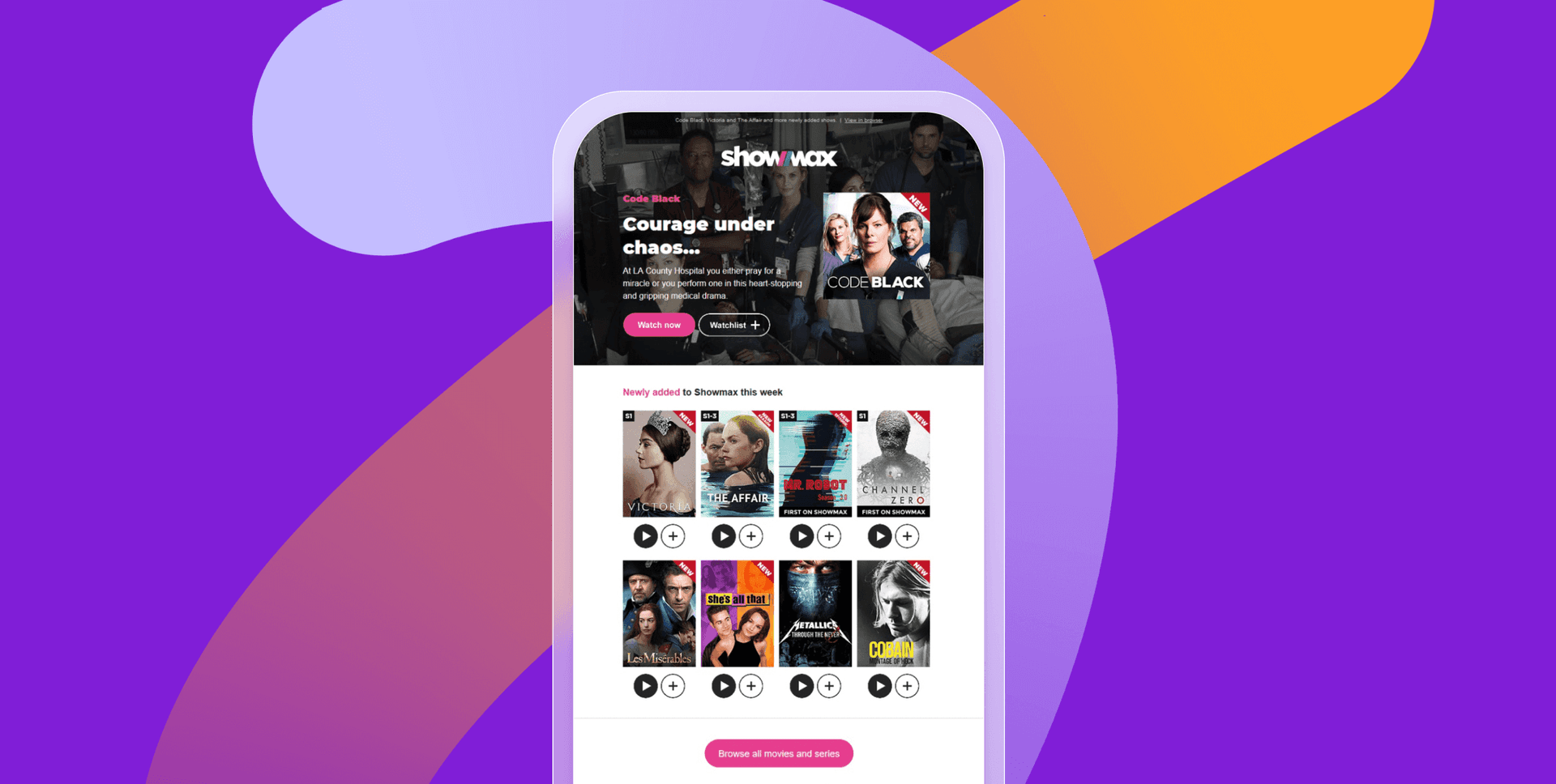
The results: Binge-worthy benefits
This targeted approach and data-driven strategy led to a 204% increase in subscribers, a 71% retention rate, a 12% boost in win-back rates, and a 37% rise in ROI. By focusing on personalized engagement, Showmax significantly enhanced user satisfaction and created more loyal customers.
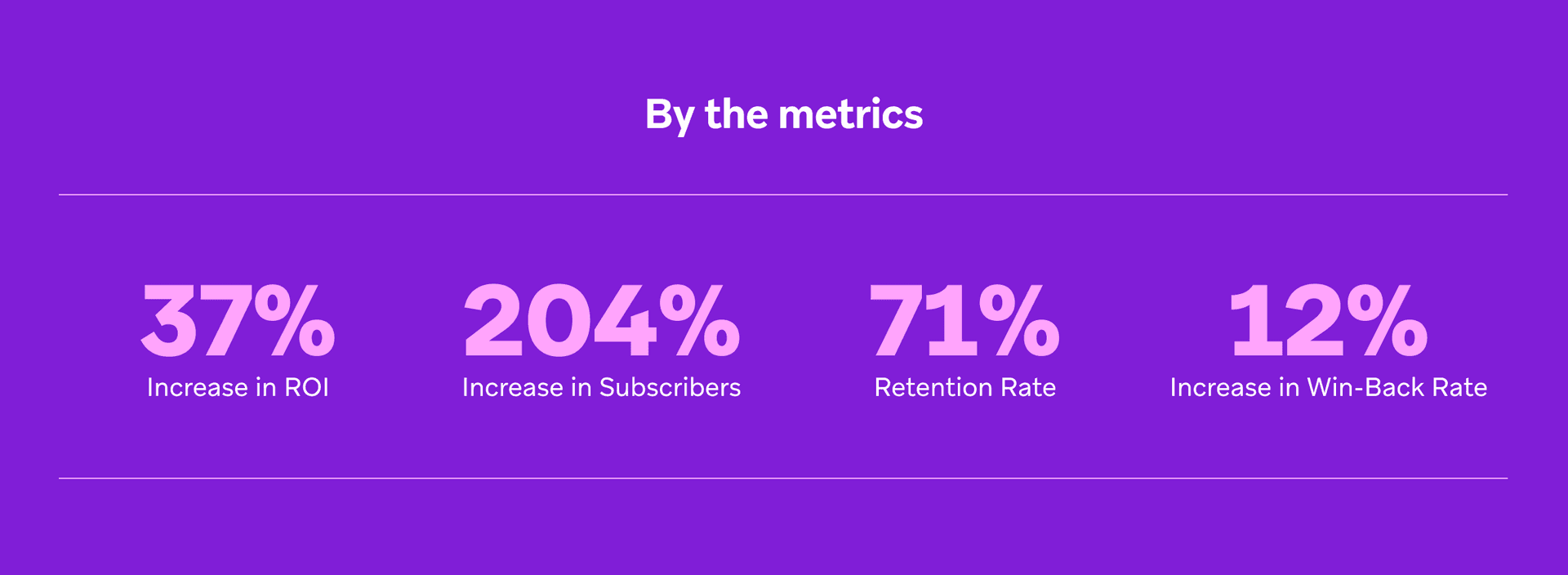
2. JOBKOREA improves engagement with personalization
JOBKOREA is South Korea's premier career recruitment platform, offering real-time job postings, personalized job information, instant application processes, resume and profile registration, company reviews, and salary details. With over 24 million individual members and 2.52 million resume registrations, they are dedicated to connecting job seekers with opportunities.
The challenge: Recruitment roadblocks
JOBKOREA's marketing efforts were hindered by inefficient developer collaboration, limited performance metrics, and a lack of personalization capabilities. Their system primarily supported basic push notifications without detailed insights into user behavior, making campaigns less effective and time-consuming to manage.
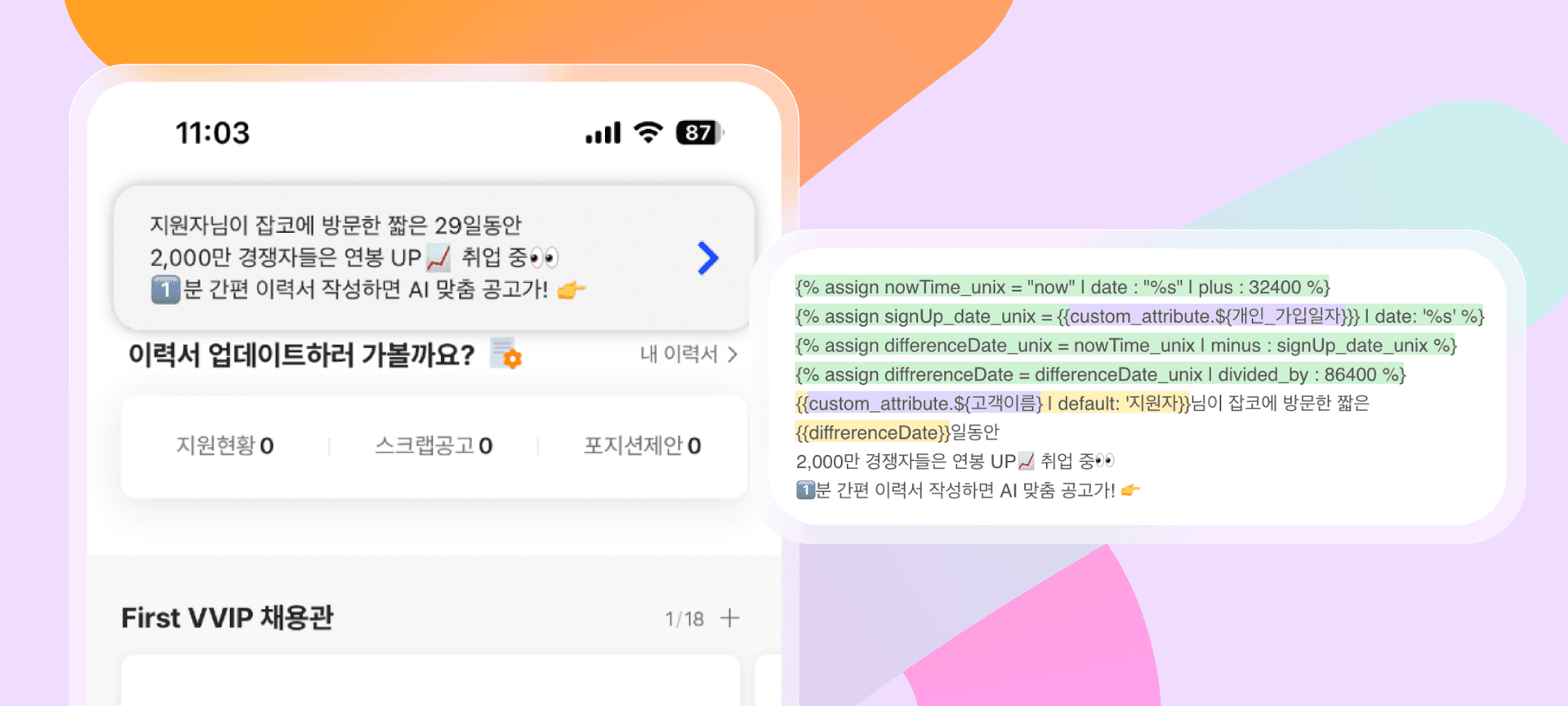
The Solution: Career customization
By adopting Braze, JOBKOREA created dynamic segments based on user behavior and custom attributes. They personalized messages using Braze Liquid, A/B testing, and seamless data integration.
The Results: Click-through triumphs
These improvements led to a 4-5X increase in average click-through rates (CTR) and higher conversion rates. Automated segmentation increased team efficiency and reduced reliance on developers, enabling marketers to make faster, data-driven decisions
Braze has allowed me to try different things as a CRM manager. Due to the nature of the IT platform, it was difficult to coordinate development schedules with multiple development projects already underway, but being able to configure personalized messages with Liquid, A/B test with color and creative variations, diversify campaigns, and review performance reports without having to ask the development team has made my job more efficient.
Eunpa Han
CRM Manager, Job Korea3. Too Good To Go reduced waste with personalized engagement
Too Good To Go is a platform committed to reducing food waste globally. They enable users to purchase 'Surprise Bags' of unsold surplus food from restaurants and grocery stores at reduced prices, preventing food from going to waste. Since its launch in 2016, they have helped save over 300 million meals.
The challenge: Fighting food waste, one bag at a time
Despite a large user base, Too Good To Go faced challenges in converting engagement into purchases. Their 'Surprise Bags' were often in limited supply and only relevant to nearby users, necessitating a strategic approach to personalized messaging to effectively match supply with demand.
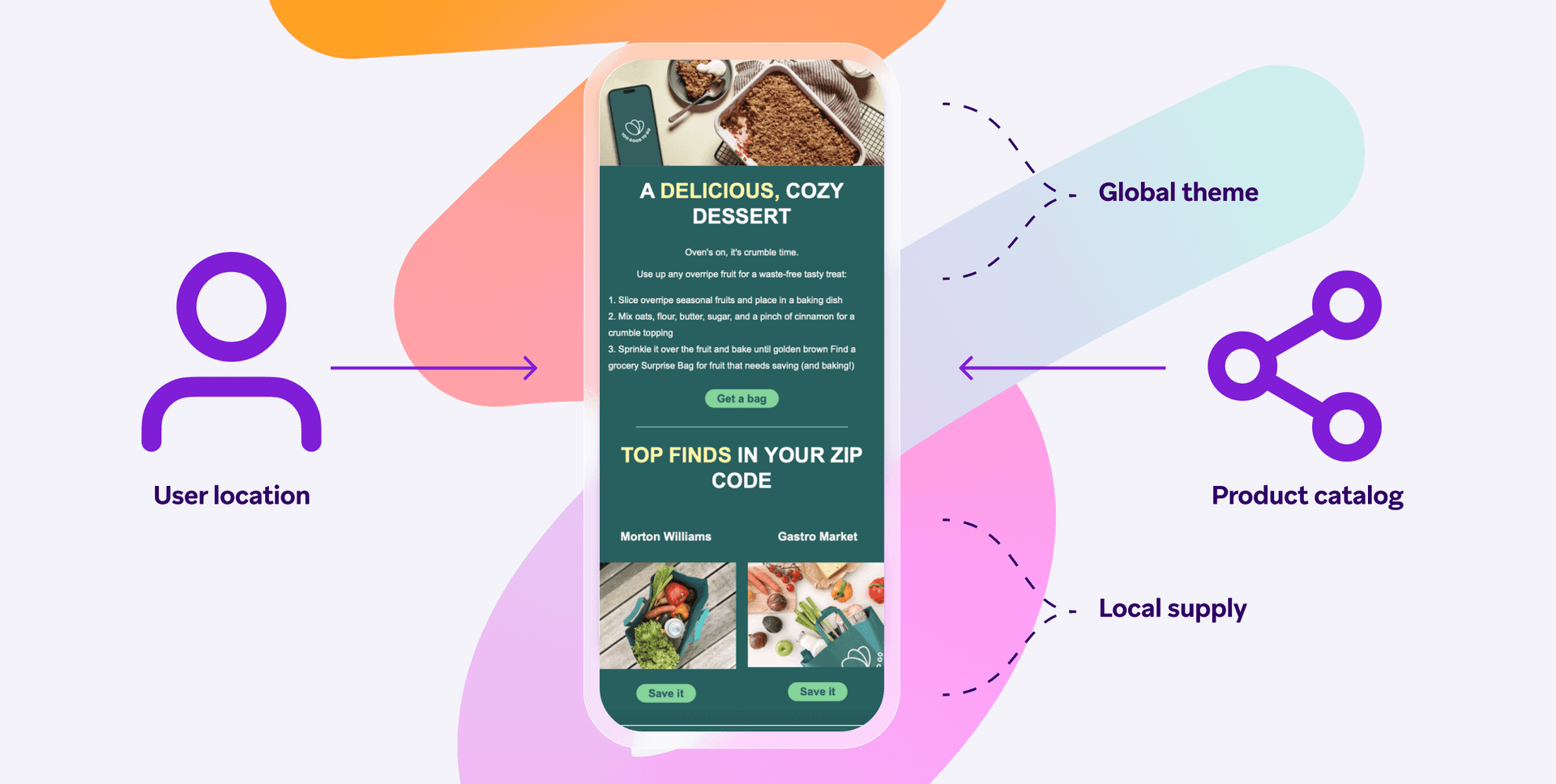
The solution: Personalization perfection
Utilizing Braze, Too Good To Go developed automated campaigns personalized to each user by leveraging Braze Catalogs. They segmented users based on preferences and behavior, such as app sessions and purchase decisions and history, and created API-triggered campaigns to notify users when relevant 'Surprise Bags' became available.
The results: Sustainable success
This strategy led to a 135% increase in purchases attributed to CRM efforts and a twofold increase in message conversion rates. By effectively matching supply with user demand through personalized messaging, Too Good To Go enhanced user satisfaction and advanced their mission to reduce food waste.
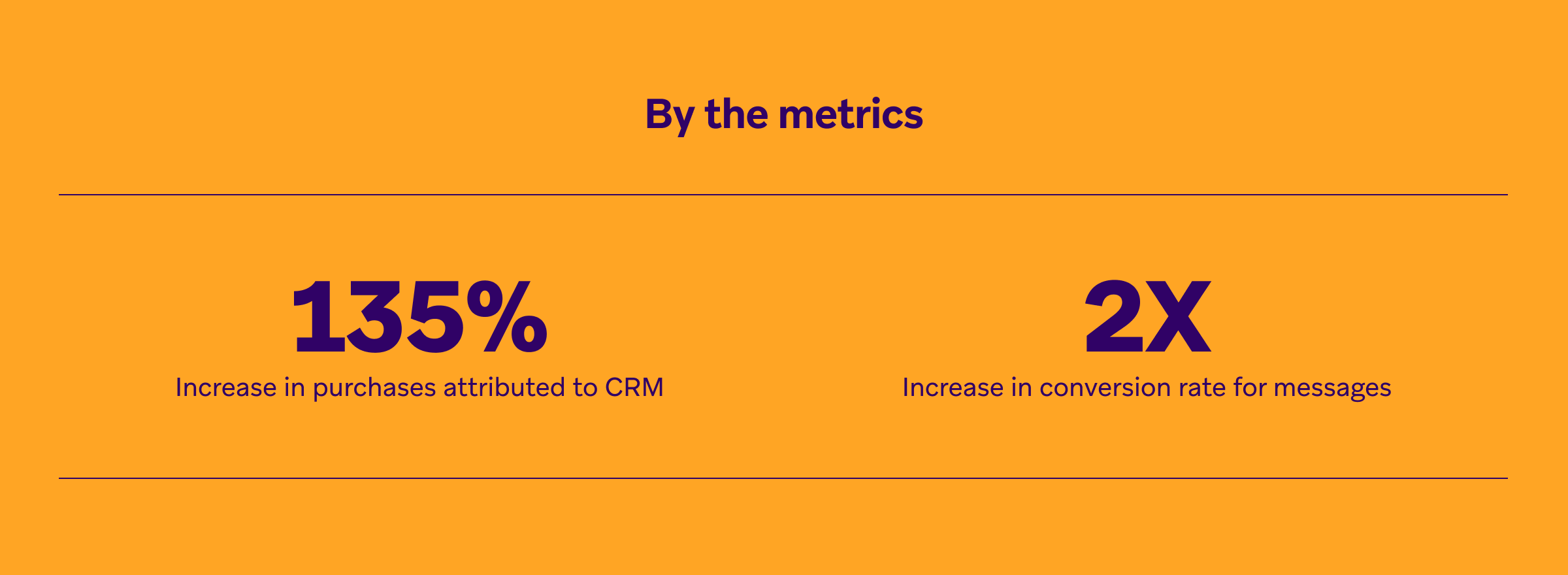
Behavioral segmentation strategies
Effective behavioral segmentation requires a strategic approach to transforms data into meaningful engagement. Here are some key strategies to help brands maximize impact:
1. Use real-time data for dynamic segmentation
Static segmentation has its limits as consumers behaviors change constantly. Brands that have the ability to react with real time context can gain the advantage. By tapping into live behavioral data and signals—such as session activity, purchase intent, or recent interactions—brands can create dynamic segments that evolve alongside their audience.
2. Personalize messaging based on engagement levels
Not all users interact with your brand the same way. High-intent users might respond well to direct CTAs, while passive users need nurturing through value-driven content. Tailoring messaging to engagement levels keeps communication relevant and increases the likelihood of conversion.
3. Use predictive analytics to anticipate user needs
AI-driven segmentation allows brands to predict future behaviors based on historical data. By identifying users likely to churn, upgrade, or make a purchase, businesses can proactively send the right message at the right moment—whether it’s a timely discount, a reminder, or an exclusive offer.
4. Segment by customer lifecycle stage
Behavioral segmentation is also about where the user is in their journey. For example, first-time visitors, repeat customers, and dormant users can all require different touchpoints. Mapping segmentation strategies to the customer lifecycle and working on journey orchestration helps brands drive long-term engagement and loyalty.
5. Test and refine with continuous optimization
Behavioral segments aren’t set in stone. A/B testing different segment criteria, message types, and engagement triggers can help brands refine their approach over time. By continually analyzing performance, businesses can adapt to shifting consumer behaviors and fine-tune their segmentation strategies for better results.
What’s the difference between behavioral segmentation and segmentation by user attributes?
Behavioral segments are created based on shared actions users have taken or behaviors they’ve demonstrated. Brands can also segment sub-groups of users by common user attributes, such as gender, location, age, etc.
On the other hand, demographic segmentation, psychographic segmentation, and geographic segmentation described above are all different types of segmentation that are based on user attributes.
The following are some examples of common user attributes brands use to create segments and sample events, behaviors, and actions taken (also known as “Events”) that marketers can use to create behavioral segments.

3 Behavioral segmentation use cases
There are countless ways your brand can use behavioral segmentation to deliver results, from increasing customer activation to boosting monetization and retention. Here are 10+ campaigns your company can enhance using behavioral segments—and drive more successful onboarding, deeper engagement, increased sales, higher customer lifetime value, and stronger loyalty.
1. Using behavioral segmentation to increase customer activation
Behavioral segments can be used to encourage more users to become active—or more active—with your brand.
Some classic examples of how behavioral segmentation can be used to increase customer activation include the creation of:
- Free trial campaigns: These can be sent to customers who have taken a specific action—such as starting the process of signing up for a paid account, consuming the limited amount of free content available to non-paying subscribers, or viewing a catalog of content or features available to paid subscribers—to encourage them to take advantage of a free trial.
- App rating campaigns: These types of campaigns are more effective when used with behavioral segmentation. Brands often send these campaigns to groups of users who have taken a high-value action, such as completing a purchase or spending a certain amount of time in a company’s app.
- App download campaigns: Brands can drive deeper engagement with these campaigns by leveraging behavioral segmentation. Certain segments of users may be especially primed to download your company’s app, such as mobile web visitors who have visited your website a certain number of times, and targeting these campaigns appropriately can drive more of these key conversions.
- Abandoned onboarding campaigns: When users begin the sign-up process but drop off along the way, companies can send targeted onboarding campaigns to this segment of users reminding them of the value of completing what they started.
- Referral campaigns: When customers take actions that demonstrate interest, engagement, and loyalty (such as converting from a free trial user to a paid subscriber or rating an item purchased), you can incentivize them to engage further by offering a reward to them for referring a friend.
2. Using behavioral segmentation to increase monetization
Savvy brands leverage behavioral segmentation to boost sales, average order sizes, conversions from free users to paid members, subscription renewals, repeat purchases, customer lifetime value, and more.
Some classic examples of using behavioral segmentation to increase monetization include creating:
- Abandoned cart campaigns: Brands send these campaigns to a behavioral segment of users who have taken the same action—abandoning their cart before completing their transaction—to encourage them back into the checkout flow and recapture potential purchases.
- Free-to-paid subscription campaigns: Companies can trigger these campaigns to be sent to segments of users who take specific actions—such as attempting to consume or use premium content or features—to encourage these customers to unlock access by upgrading to a paid subscription.
- Cross-sell campaigns: By leveraging data on customers’ past purchases and browsing activity, brands can send targeted product recommendations to cross-sell effectively to customers, driving purchases and customer lifetime value.
3. Using behavioral segmentation to increase retention
Data-driven marketers take advantage of behavioral segmentation to foster customer loyalty, encourage more frequent engagement, and extend customer lifetimes.
Some classic examples of using behavioral segmentation to increase retention include creating:
- Loyalty enrollment campaigns: Ideally these types of messages, which encourage customers to join a company’s loyalty program so they engage and spend more often with the brand, should be sent to specific segments of users after they complete a high-value action, such as favoriting an item or using a promo code.
- Reward and perk campaigns: By using behavioral segments based on customers’ time spent in the app or their purchase amounts, brands can send targeted rewards to top-tier users in recognition of their activity, potentially furthering their loyalty over time.
- Customer feedback/NPS survey campaigns: Companies can evaluate customer loyalty and encourage users to share valuable insights by sending customer feedback surveys and Net Promoter Score (NPS) surveys after users engage with a brand in a meaningful way, such as after making their first purchase or complete a first session in a company’s app. By gathering this data, your brand can gain new learnings that can be used to drive retention.
- Lapsing user campaigns: By using event data such as the date a customer last read an article, purchased an item, or engaged with a campaign, your company can create a behavioral segment of lapsing users and send targeted campaigns that give these users a reason to come back and get more value from your brand.
- Win-back campaigns: Marketers can generate segments of already lapsed users based on the date of their last interaction with their brand, and create tailored messaging designed to get them to re-engage.
- Continue-your-streak campaigns: When members of your audience start—or continue a streak—it’s a great opportunity to recognize and gamify this behavior to encourage strong engagement and loyalty over time.
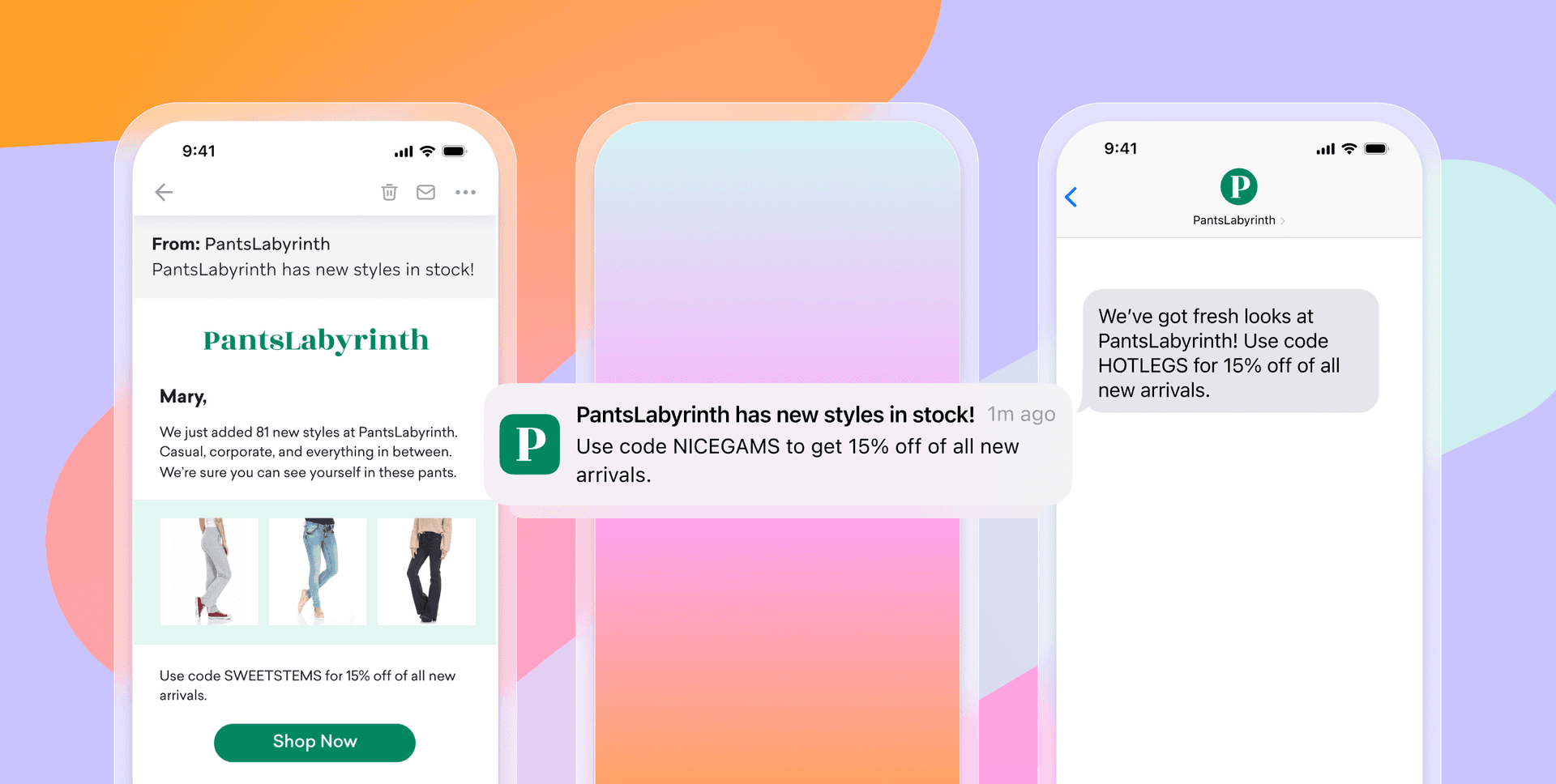
Tips to implement behavioral segmentation
Here’s how to put behavioral segmentation into action:
1. Start with clear objectives
Before diving in, define what you want to achieve. Are you looking to increase conversions, improve retention, or re-engage dormant users? Aligning segmentation with business goals so your approach drives real impact.
2. Use first-party data as your foundation
Behavioral segmentation is only as strong as the data behind it. Tap into real-time user interactions, such as website activity, app engagement, purchase history, and campaign responses. First-party data provides the most accurate, privacy-compliant foundation for segmentation.
3. Create dynamic, evolving segments
Users aren’t static, and your segment shouldn’t be either. Instead of relying on rigid categories, build dynamic segments that update in real time based on user behaviors. This allows you to personalize outreach as users shift between interest levels, lifecycle stages, or engagement patterns.
4. Prioritize personalization over broad targeting
The best behavioral segmentation strategies focus on individual relevance rather than broad demographics. Use behavioral insights to tailor messaging, product recommendations, and timing. Whether it’s a welcome flow for first-time users or re-engagement content for lapsed customers, make every interaction feel personal.
Finding the right technology to support behavioral segmentation
When looking to source a customer engagement platform that supports behavioral segmentation, be sure to opt for solutions that offer:
- Real-time stream processing of customer data, to enable in-the-moment, dynamic segmentation, and personalization
- Built-in data privacy and compliance, in line with standards and regulations set by SOC 2, GDPR, HIPAA, and CCPA
- The ability to create segments using almost any characteristic captured via a customer engagement platform or CRM
- Insights and analytics on segment performance, including lifetime revenue generated per segment
- A/B and multivariate testing capabilities to measure the impact of various segmentation strategies
Behavioral segmentation for your mobile marketing strategies
Mobile is where customer interactions happen in real time—whether it’s in-app browsing, push notification responses, or mobile purchases. Behavioral segmentation in mobile marketing strategies helps brands move beyond generic messaging and create deeply personalized, context-aware experiences that drive engagement.
1. Segment based on in-app behavior
Users interact with mobile apps in different ways—some explore multiple features, while others stick to a single function. Identifying active users, casual browsers, and dormant accounts allows for tailored messaging that encourages deeper engagement.
2. Personalize push notifications for higher impact
Generic push notifications often get ignored, but behavior-driven notifications—triggered by actions like cart abandonment—can deliver real value. For example, sending a time-sensitive discount to a user who has viewed a product multiple times can nudge them toward conversion.
3. Optimize messaging based on session frequency and duration
A user who opens your app daily needs a different experience from someone who checks in once a month. Frequent users might benefit from VIP offers or loyalty rewards, while infrequent users may need re-engagement campaigns that highlight new features or exclusive content.
4. Leverage geolocation for real-time engagement
Location-based segmentation allows brands to deliver hyper-relevant offers and updates when users are near a store, event, or key location. A restaurant app, for instance, can send an exclusive deal when a user is within walking distance, driving immediate action.
5. Use predictive analytics to anticipate user needs
Machine learning can help identify patterns in mobile behavior—predicting which users are likely to churn, which are ready for an upgrade, and which need a nudge to complete a purchase. Proactively targeting users based on these insights keeps engagement high and churn rates low.
6. Test and refine for continuous improvement
Mobile user behavior evolves quickly, so segmentation strategies need to adapt. A/B testing different notification types, messaging tones, and timing strategies helps refine engagement tactics and drive better results over time.
Final thoughts
It pays to invest in personalization efforts like behavioral segmentation. Researchers have found that personalization efforts can boost revenue by 10 to 15% on average, and by as much as 25%, depending on the industry. Furthermore, fast-growing companies that outperform the competition when it comes to personalization yield 40% more revenue from their efforts compared to laggards.
The challenge for brands is to successfully execute. Only 35% of businesses feel like they’re able to deliver personalized experiences across channels. Meanwhile, less than half of brands are personalizing the experience based on real-time customer data.
Forward-Looking Statements
This blog post contains “forward-looking statements” within the meaning of the “safe harbor” provisions of the Private Securities Litigation Reform Act of 1995, including but not limited to, statements regarding the performance of and expected benefits from Braze and its products. These forward-looking statements are based on the current assumptions, expectations and beliefs of Braze, and are subject to substantial risks, uncertainties and changes in circumstances that may cause actual results, performance or achievements to be materially different from any future results, performance or achievements expressed or implied by the forward-looking statements. Further information on potential factors that could affect Braze results are included in the Braze Annual Report on Form 10-K for the fiscal year ended January 31, 2025, filed with the U.S. Securities and Exchange Commission on March 31, 2025, and the other public filings of Braze with the U.S. Securities and Exchange Commission. The forward-looking statements included in this blog post represent the views of Braze only as of the date of this blog post, and Braze assumes no obligation, and does not intend to update these forward-looking statements, except as required by law.
Behavioral segmentation FAQs
There are four main types of segmentation: behavioral segmentation, demographic segmentation, psychographic segmentation, and geographic segmentation.
Dynamic segmentation uses real-time data processing to create continuously updating segments or groups of individuals with shared traits or characteristics. This is what enables marketers to deploy personalized marketing in the moment.
Brands that successfully incorporate behavioral segmentation to power their marketing personalization efforts can benefit from gains in:
- Sales
- Order sizes
- Conversions
- Purchase frequency
- Customer lifetime value
- Retention
- …and more
Related Tags
Be Absolutely Engaging.™
Sign up for regular updates from Braze.
Related Content
View the Blog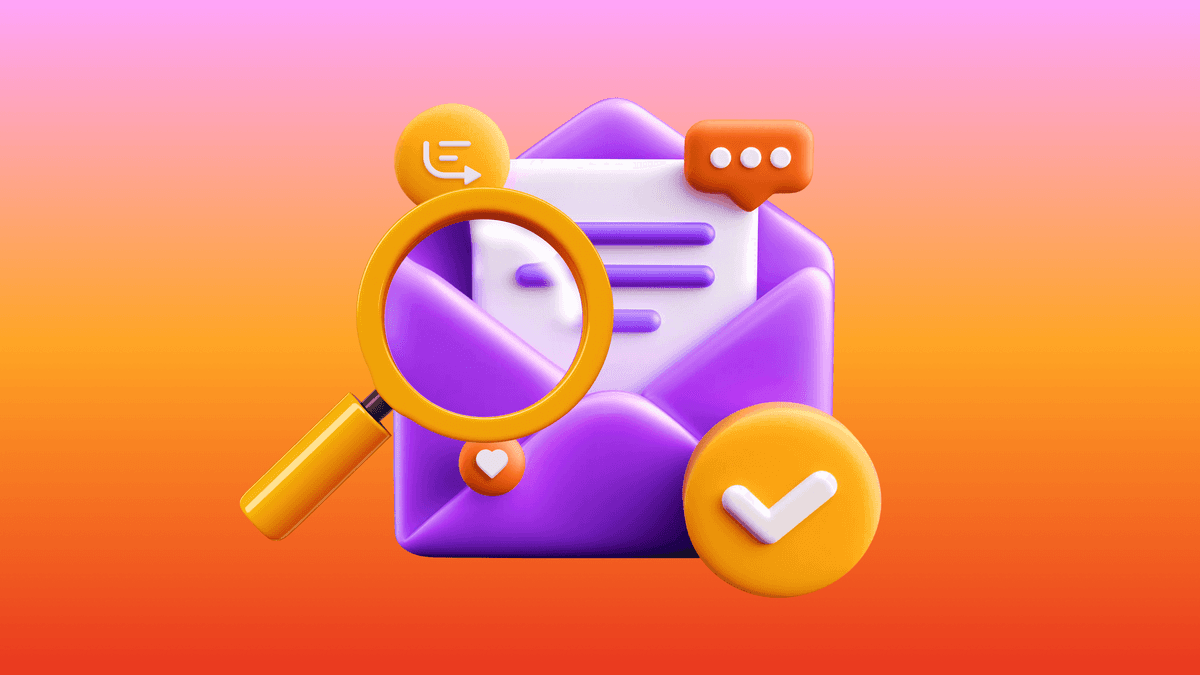
The new inbox reality: How iOS changes are reshaping email marketing

Aparna Prasad

Experience optimization: Turning data insights into better journeys
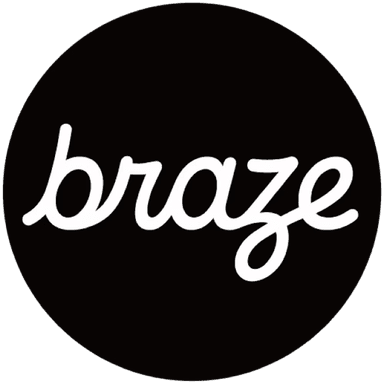
Team Braze
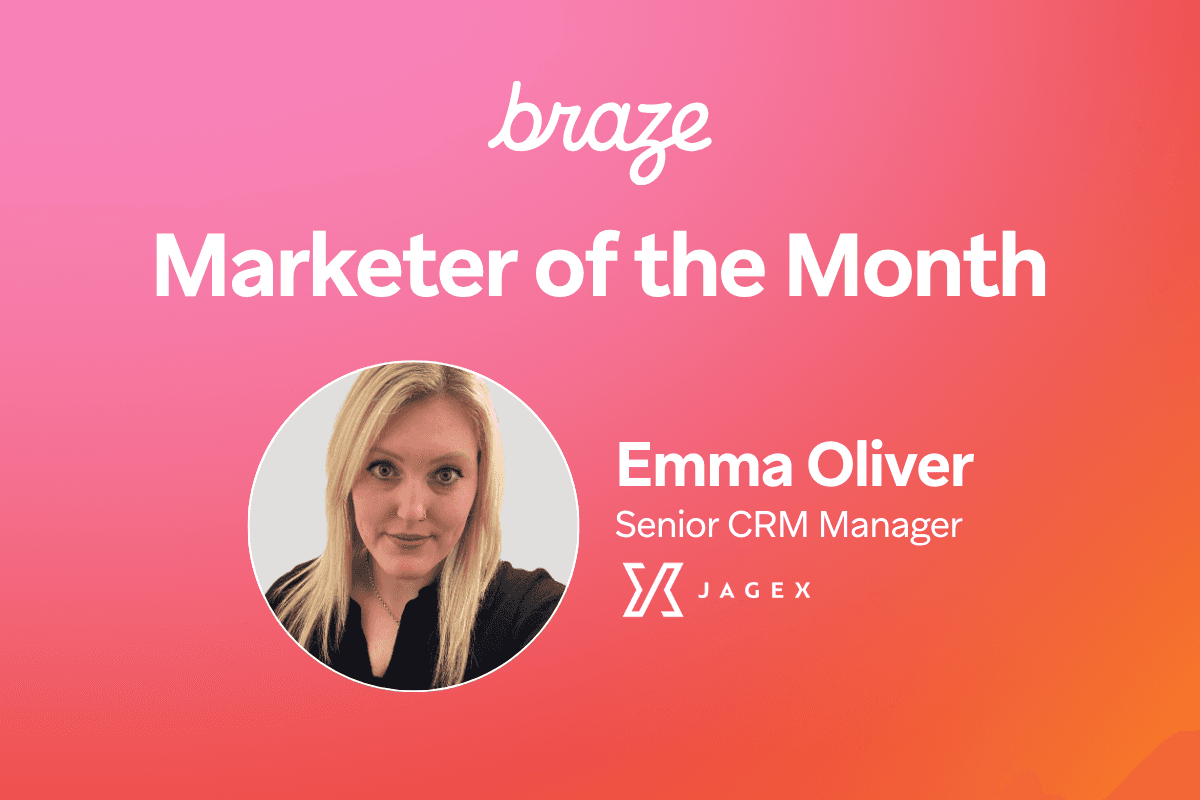
December 2025 Bonfire Marketer of the Month: Jagex’s Emma Oliver
